The Krishnan Gonzalez family lives in their ~2300 ft² (~210 m²) West End Toronto century home with their two rabbits. The family purchased their semi-detached home in 2003. They rented it out for 8 years when they started living abroad in 2012. Then returned in 2020 and noticed how uncomfortable and costly the house was.
The basement was cold in the winter, while the top floor got unbearably hot in the summer. This 115-year-old house originally had double-brick walls with zero insulation. On particularly windy days, drafts were noticeable. “Before, you could almost feel a gust—really, just a really strong draft—that would move its way through the house,” mused Raghu Krishnan. In some leaky homes, drafts can even rattle interior doors. In some years, their annual energy bills reached over $3,000.
How did the Krishnan Gonzalez family increase comfort and reduce sticker-shock on energy bills?

The family’s two pet rabbits enjoying free run of the house without worrying about rats in the walls.
| Retrofit at a Glance | |
| Starting Point | Retrofit Results |
| 111 GJ EnerGuide Rating | 39 GJ EnerGuide Rating (65% energy savings) |
| Air-leakage rate of 8.4 ACH50 | Air-leakage rate reduced 15% to 7.1 ACH50 |
| Attic insulation mostly R50 | / |
| Wall insulation 93% R0 | Wall externally insulated 59% to R14 with rigid board |
| Basement insulation 25% R12, the rest R0 | Basement 100% R14 mineral wool batts |
| Inefficient slider window | 1 window replaced with ENERGY STAR unit |
| 20 kW heating load | Heat loss reduced by 27% |
| 1 old 80% efficient gas furnace, 2-ton ductless mini-split heat pump | 1 new 3.5-ton cold-climate heat pump, kept 2-ton mini-split |
| 0.54 EF gas water heater | 0.87 EF electric water heater |
| / | Added an energy/heat recovery ventilator |
| / | Added a drain water heat recovery pipe |
| 1 gas dryer | 1 heat pump dryer |
| 1 gas stove | 1 induction stove |
| / | Added 6.4 kW of rooftop solar PV |
| Built 1908 | Retrofit 2023 |
| 5.5T of CO₂e per year | GHG emissions down 88% |

The Home Retrofit Journey
When the Krishnan Gonzalez family moved back into the house in 2020, the old ductless heat pump was no longer working. They replaced it in 2021 with a mini-split heat pump. This helped them reduce their electricity use over the warmer months.
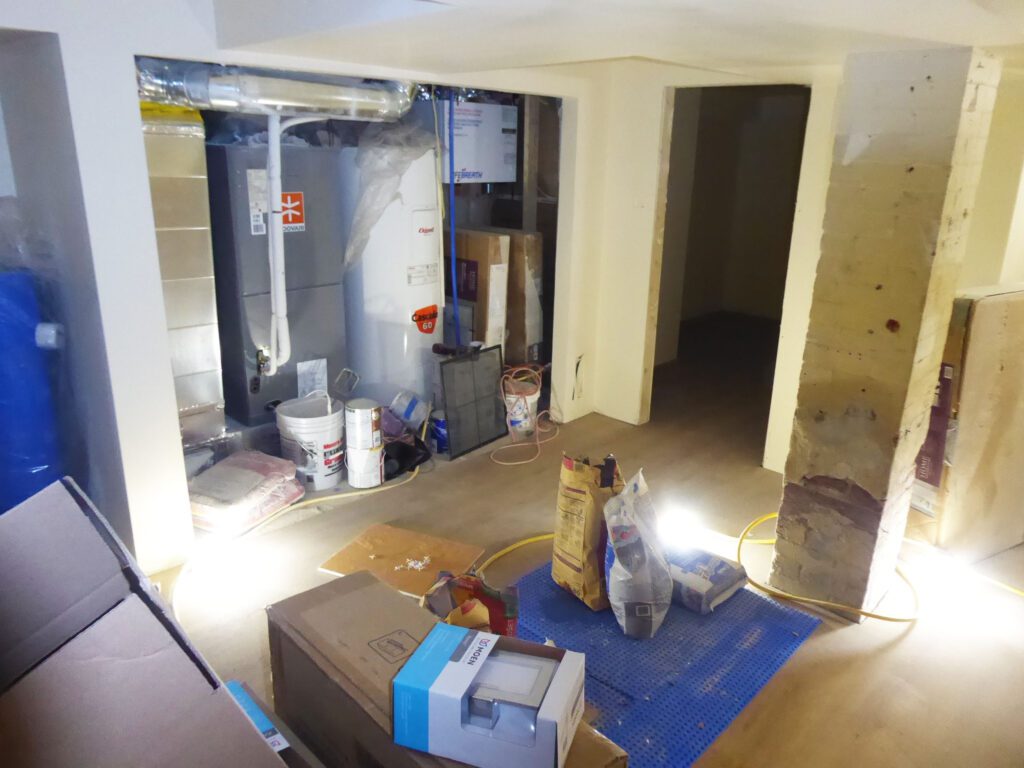
A photo of the Krishnan Gonzalez family’s basement renovation nearing completion.
The gas furnace was showing its age in the winter of 2021-2022. The family had the HVAC contractor come by to look at it. Raghu asked the HVAC contractor about heat pumps. He was not prepared for the negative things the contractor said about heat pumps. The aging gas furnace and the notion that heat pumps don’t work in our climate put a chill down Raghu’s spine.
But that did not stop Raghu. He did his own research. Raghu connected with local homeowners who had installed heat pumps. He joined neighbourhood Facebook groups for The Pocket and Harbord Village.
In December of 2022, Karanvir — a registered EnerGuide Energy Advisor from Windfall Ecology Centre — arrived at Krishnan’s home. Karanvir performed a Pre-retrofit EnerGuide Evaluation.
In the end, the family did more than just replace their gas furnace with more heat pump capacity. They also electrified their water heater, stove, and clothes dryer. And they renovated the basement too!
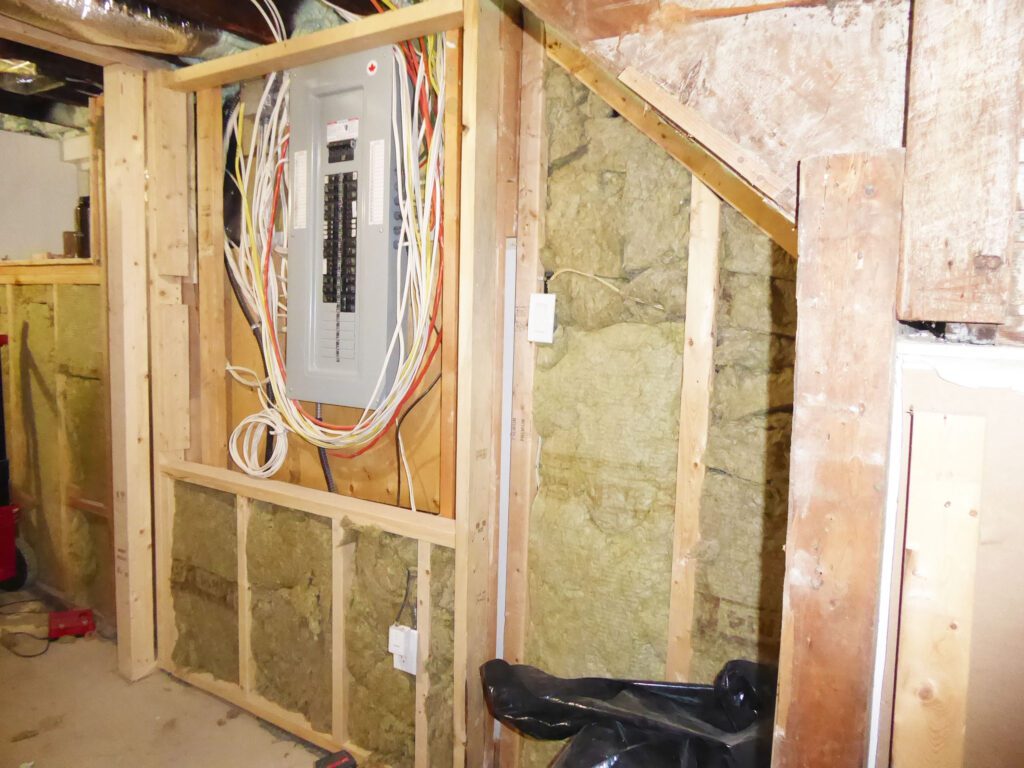
Photo of the upgraded 200-amp panel and new basement insulation.
In March 2023, the new electric water heater was installed, replacing the old fossil fuel water heater. This single change already started to cut the gas bills down and was the first in a line of retrofit upgrades that improved the Krishnan Gonzalez family’s comfort while reducing costs and fossil fuel emissions. Later in the summer, the family replaced their gas range with an induction stove and their two gas dryers with a heat pump dryer and a regular electric dryer. The family ended their reliance on fossil fuel in their home and cut their gas service. In September 2023, they paid their last gas bill and capped their gas line!
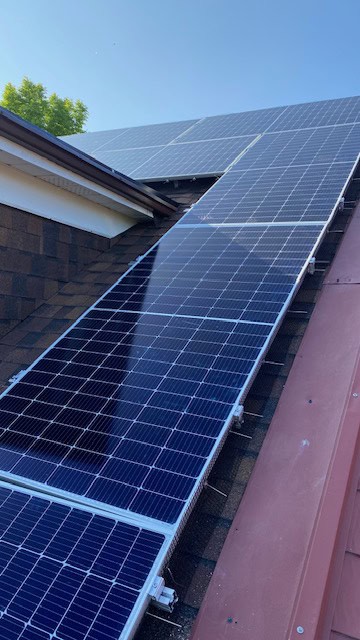
Photo of the rooftop solar panels on a sunny day.
In mid-June of 2023, the Krishnan Gonzalez household finished their most hassle-free energy retrofit. They installed solar panels. The roof was recently replaced (2019), so the solar installers at Herc du Soleil made quick work of the installation. With all the electrification work, the family had to upgrade their 100-amp panel to a 200-amp panel. They also had a two-way electrical meter installed as part of the solar net-metering agreement signed with Toronto Hydro.
In June 2023, work started on the basement. The drain water heat recovery pipe recycles heat from hot water going down the drain. They installed a 3.5-ton central cold-climate heat pump and a heat recovery ventilator. The Krishnan Gonzalez family also went to special lengths to make sure their general contractor insulated the basement header to help seal leaks and insulate this well-known area of heat loss in the home.
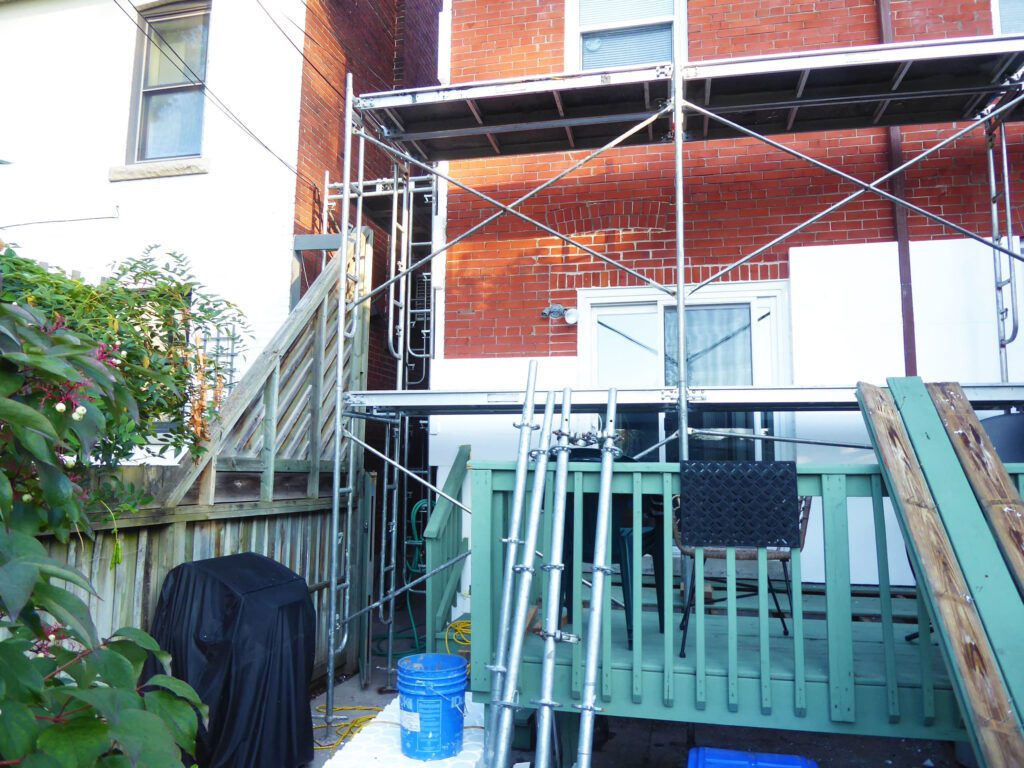
Photo of external rigid board insulation installation going over the top of the existing red double-brick wall.
In the autumn of 2023, work on the external insulation and stucco was completed. The Krishnan Gonzalez household also had their ducts leak-sealed. That concluded a whirlwind nine–month renovation project, and their energy advisor returned in November 2023 for the post-retrofit evaluation.
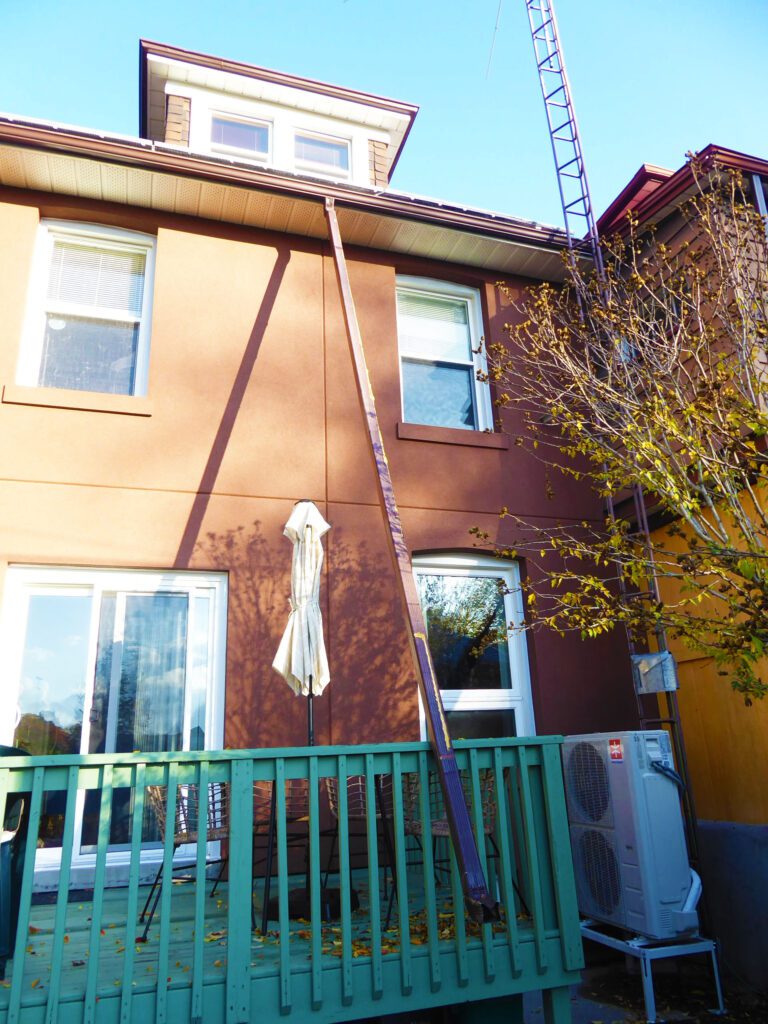
Photo of the completed stucco cladding and cold-climate heat pump.
The Retrofit’s Benefits
Raghu was the first to do anything quite like this in his circle of friends and family. For him, it was a no-brainer to do this work to fix issues like mold in the basement. Raghu’s brother lives in the basement suite.
The Krishnan Gonzalez family have always been big fans of using ceiling fans, and they still are. “Most of the time,” Raghu said, “we feel like that ceiling fans are enough but there are a few weeks in summer where the heat pumps are a lifesaver.”
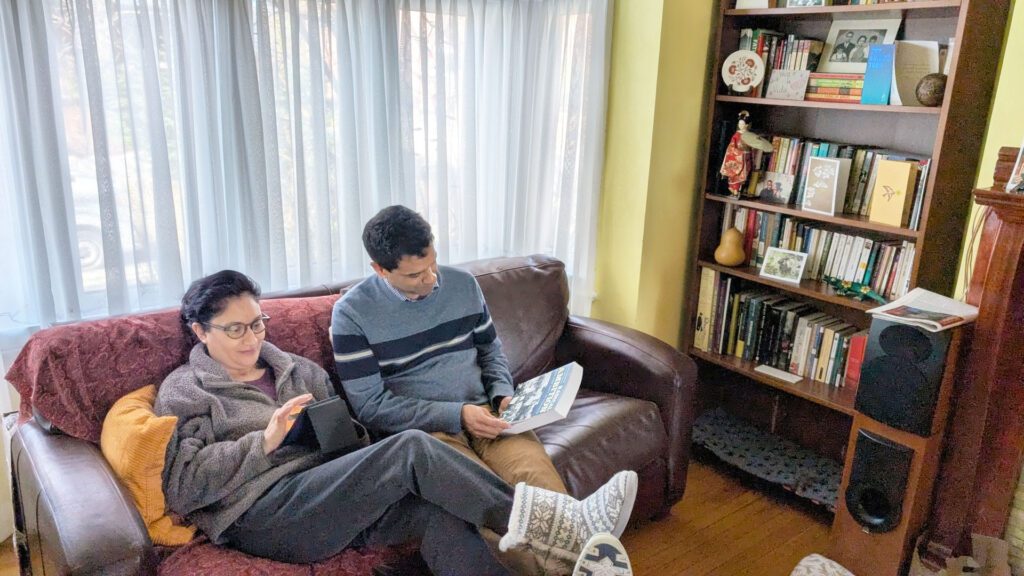
Raghu and his wife Veronica enjoying some reading in their now comfortably warm living room.
Another benefit to the renovation was that the family were able to plug the gaps or old pipes in the basement slab where rats were getting in. “The rats even made it up and got under the siding and we could hear the gnawing from our bedroom just above the living room here,” explained Raghu. “We got rid of the problem, thankfully.”
The family loves the new induction stovetop for how quickly it brings things to a boil. Raghu also likes the peace of mind that there is absolutely zero chance of a gas leak.
The kitchen cabinets are on a cold exterior wall. Raghu’s wife used to warm cold dinner plates in the microwave before serving food. “I thought that was a very elegant solution,” said Raghu. “But now we don’t have that problem because we insulated both externally and internally on that wall.” No more cold crockery for the Krishnan Gonzalez family!
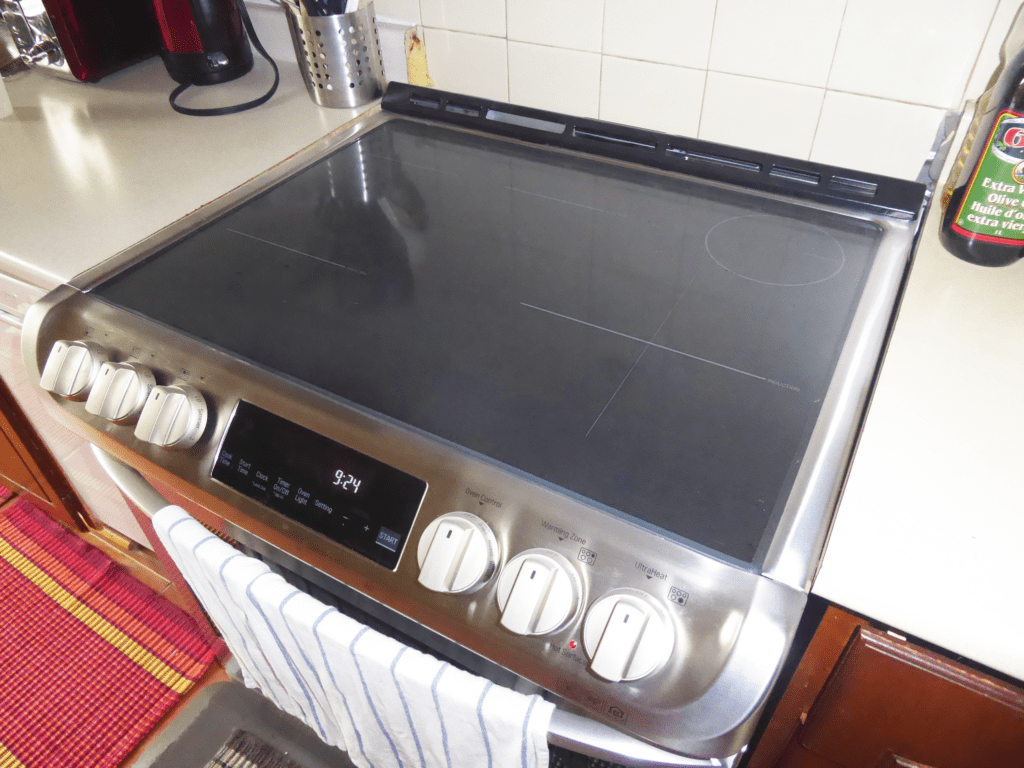
Photo of the family’s new induction stovetop.
Financial and Climate Goals
Financial incentives, especially in the form of rebates, are one of the most powerful tools in our policy toolkit to support the retrofit of Canada’s homes. The Krishnan Gonzalez family started their electrification journey at a good time for rebate programs.
The family was able to access the combined Home Energy Rebate Plus program, which made available $10,600 in rebates from both Enbridge and the federal Canada Greener Homes Grant. The family also earned an additional $10,000 for meeting eligibility requirements for the City of Toronto’s Deep Retrofit Incentive.
The Krishnan Gonzalez family also received the full $40,000 interest-free Canada Greener Homes Loan from the Canada Mortgage and Housing Corporation (CMHC).
Finally, the family was also able to receive low-interest financing from the City of Toronto’s Home Energy Loan Program (HELP) in the amount of $64,538.84.
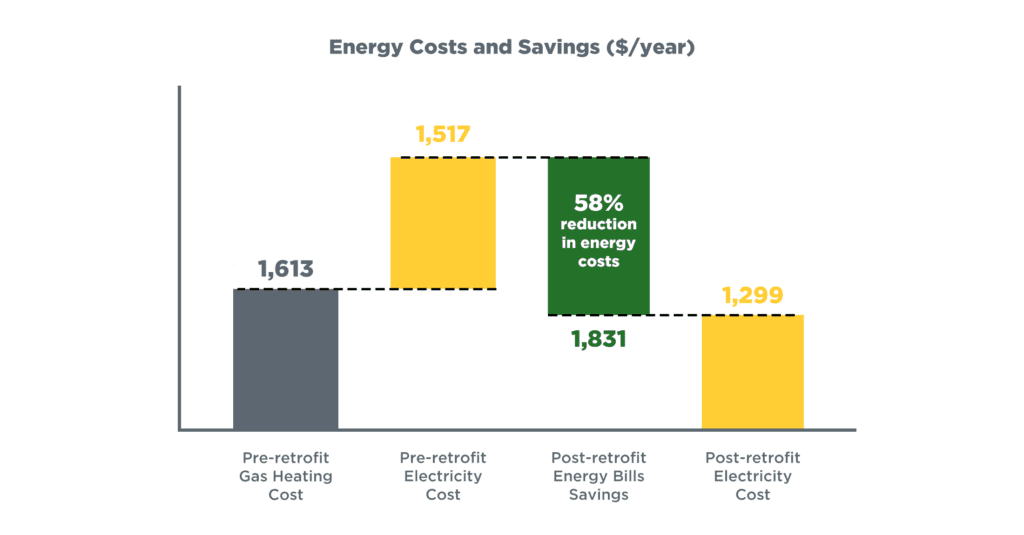
The Krishnan Gonzalez family’s monthly loan repayments for the first 10 years will be $775.87. This may seem like a big number, but it falls to $442.54 for the last 10 years. After that, with average annual savings of about $1,831, the entire ~$1,831 goes straight into their pockets.
The benefits of solar power also help the family live more cost-effectively. “In the summer months,” explained Raghu, “we actually sell to the grid and get credits to offset bills later in the year.”
“Our one house isn’t going to fix the climate crisis,” admits Raghu, “and I know that doing what we did isn’t within everyone’s means. But I do think there has to be a radical reduction in carbon emissions, and I’m hoping to do my part wherever I can.”
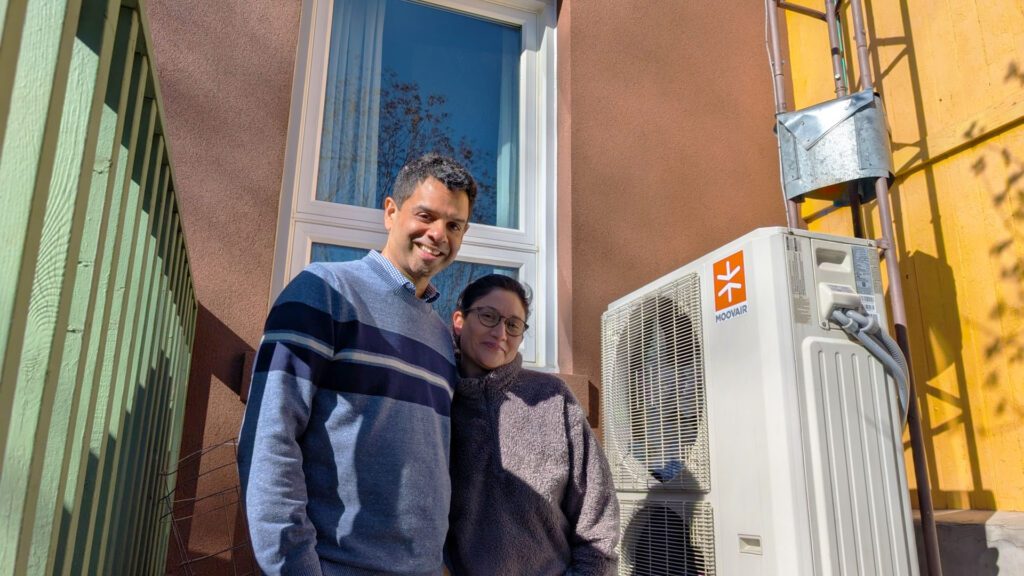
Raghu and Veronica happily pose next to their cold-climate heat pump in the backyard.
Future Plans
The Krishnan Gonzalez family is not done yet! They are thinking about comprehensive draft-proofing work. They also want to extend the exterior insulation and stucco to the front of the house so that the second-floor bathroom is less drafty.
We asked Raghu about the hurdles he encountered in this retrofit journey. He noted that contractors who are not enthused about green building and retrofit approaches need upskilling.
“One of the guys who came to give us a quote on the exterior insulation said that it’s just such a small market share of what [they] do; it just hasn’t been worth putting in the manpower, training, and research to serve folks who want this work done.”
Motivated homeowners with the means and time to pursue this work should have effective support from contractors.

Recent Comments